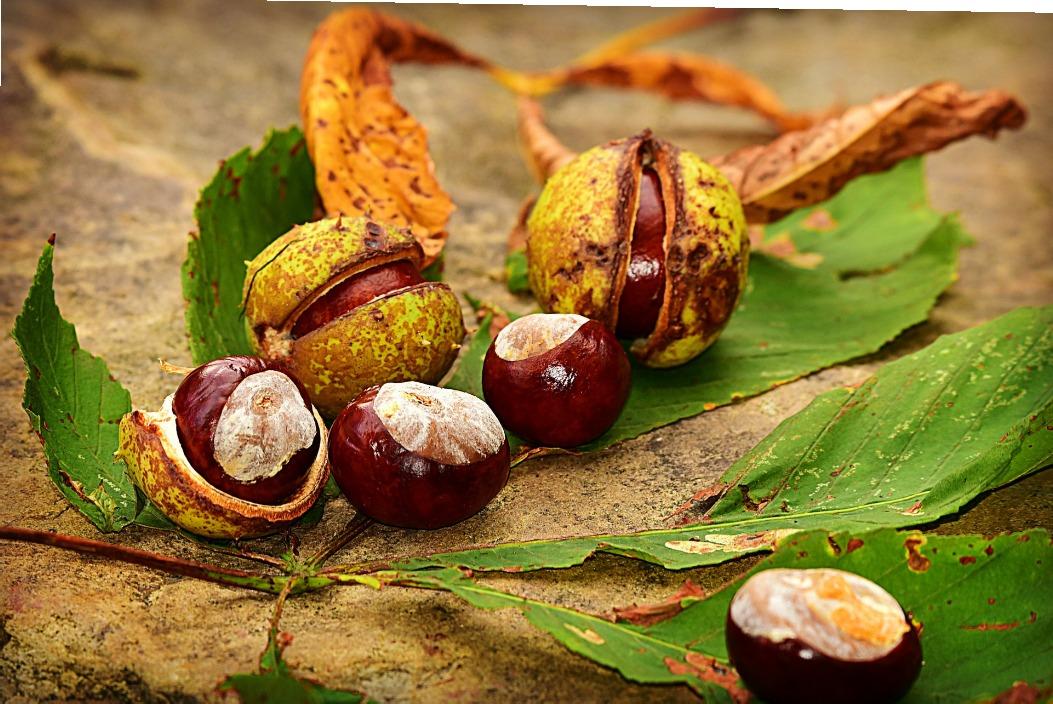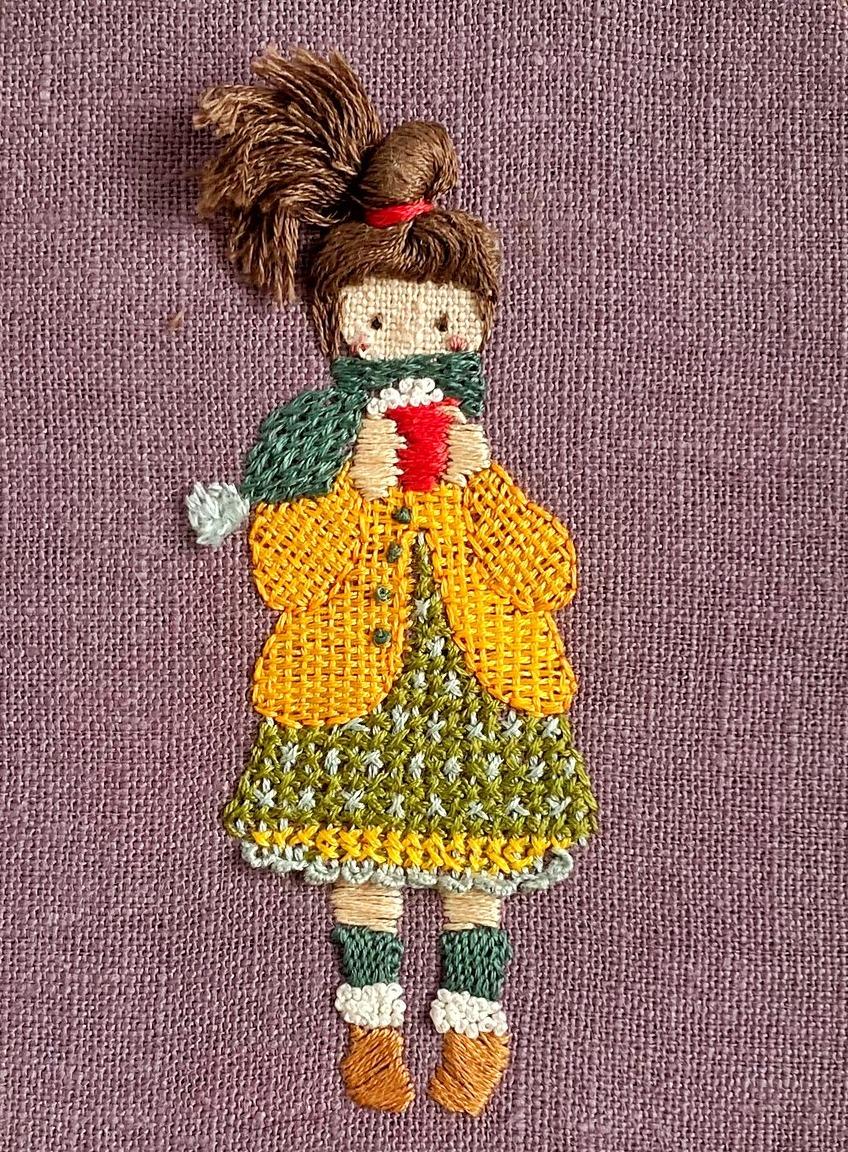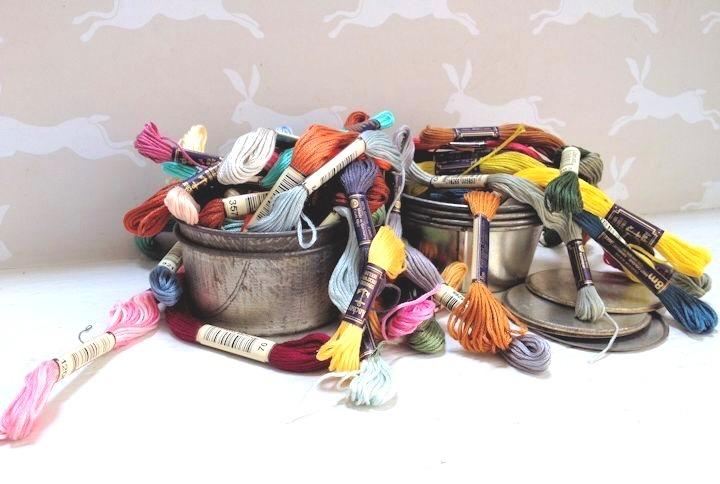

A Bustle & Sew Publication
Copyright © Bustle & Sew Limited 2023
The right of Helen Grimes to be identified as the author of this work has been asserted in accordance with the Copyright, Designs and Patents Act 1988.
All rights reserved. No part of this publication may be reproduced, stored in a retrieval system or transmitted in any form, or by any means, without the prior written permission of the author, nor be otherwise circulated in any form of binding or cover other than that in which it is published and without a similar condition being imposed on the subsequent purchaser.
Every effort has been made to ensure that all the information in this book is accurate. However, due to differing conditions, tools and individual skills, the publisher cannot be responsible for any injuries, losses and other damages that may result from the use of the information in this book.
First published 2023 by: Bustle & Sew Station House West Cranmore Shepton Mallet BA4 4QP www.bustleandsew.com
Welcometothe SeptemberMagazine
Hello everyone!
I love September. It’s still warm enough be outside and enjoy the last summer sunshine, golden now, and hazy, the sun lower in the sky and the chickens put to bed a little earlier each night. The hedgerows and trees, which for a few weeks now have just looked like dark green blobs, dusty and tired, dress themselves in gorgeous autumnal colours of red and gold, orange and ochre.

We celebrate the arrival of autumn in this issue with two projects, the Autumn Bouquet hoop and a pair of little autumn themed motifs. We also look ahead to Christmas with the second part of the Christmas Garland Advent Calendar. In keeping with my aim of thrifty recycling and reusing we have the tea towel project bag (yes really!) and the little Red Hen pin cushion that uses only the tiniest scraps of felt and an old wooden reel to make a great gift idea - or why not keep for yourself?!
I hope you enjoy this issue and the October Magazine will be published on Thursday 28 September, in four weeks time. Until then I hope you have a lovely month, with lots of time for stitching!

Very best wishes

Betweenthismonth’scovers…
September Almanac Page 5
Autumn Bouquet Hoop Page 8
Nature Notes: Conker Time! Page 11
Finishing your Abandoned Projects Page 12
Lovely Idea! Messenger Bear Page 16
Tea Towel Project Bag Page 17
Sew! A Needle Pulling Thread Page 21

Smarty Pants! Page 24
Little Red Hen Pin Cushion Page 29
In the Kitchen: Safely Gathered in… Page 32
Alice in Stitches Page 46
Some thoughts about floss Page 53

Those Mellow Days Page 54
Lovely Idea: Crochet Fox Page 58
Poetry Corner Page 59
Garland Advent Calendar Part II Page 60
Aboveall,Septemberisthemonth of berries - bramble, rowan, hawthorn and spindle, to mention just a few; a hedgerow harvest that will provide valuable sustenance for hungry birds throughout the colder months ahead. And on those misty golden mornings, there are few sights more evocative of the onset of autumn than the early morning festoons of dew-drenched gossamer like spiders’ webs draping the hedgerows and sparkling in the hazy light. There are still plants in flower though, hogweed, angelica and the glorious honeysuckle that winds its way far above our heads. And at the end of the month, if we’re lucky, we may experience an “Indian Summer” so named by

September
Americansettlersinthenineteenth century as the native Americans would use such days to store their crops and make preparations for the winter months ahead.
the promenaders leave the hall and mingle with the crowds in Hyde Park, there is a sense of melancholy, of regret for the brevity of our British summer. But take heart - there’s fine weather and enjoyment yet to come and autumn here in the UK can be our finest season.
In London, the Albert Hall is packed for the last night of the Proms - that stirring blend of nostalgia and patriotism which marks the end of ‘the season.’ As
The first of the month is St Giles’s Day. Almost nothing is known of the real St Giles, who died about the year 710, except that he foundeda monastery inProvence. This didn’t deter the medieval legend-makers however, who provideda colourfulexplanationof how he obtained the money to found his monastery. The story goes that while he was living as a hermit he kept a pet doe that
“Gentlemanrobinbrownas snuff
Withspindlelegsandbright roundeye Shallbeyourautumn company.”
rovided milk for his nourishment. One day the king’s huntsmen trapped this doe in the dense thicket where Giles lived. The doe was protected from harm by the saint’s prayers, but he was wounded by a huntsman’s arrow. The King recognised his holiness and gave him many gifts which he used to found the monastery.
The word autumn comes from the Latin autumnus and its use in English dates back to the 14th century. In the USA fall is preferred and this term appears in 16th century texts in the longer phrase “fall of the leaf” which was eventually shortened to fall.” Interestingly this interchangeability with the word led, by the mid-19th century to the use of as a colloquial term for execution by hanging. It camefromaplayonthephrase“go off with the fall of the leaf” which alsoalludedtohanging,thegallows being described as the “leafless tree.” Ugh! But at the beginning of the month the trees are still in full leaf, though starting to look a little tired and dusty.
In English folk tradition September 14, Holy Rood or Holy Cross Day, has long been known as “the Devil’s nutting day,” a phrase that dates back half a millennium. Going a-nutting crops up in songs and plays of the early seventeenth century as a byword for seduction and a well known notion, current from at least the 1660’s to the late twentieth century claimed “a good year for nuts, a good year for babies.” Country people ware constantly warnednotto go nutting on Sundays, as the Devil would e there, disguised as a gentleman, to pull down the upper branches for them. The fourteenth was seen as particularly risky as in the letter extract below written by the poet John Clare in 1825….
The modern Harvest Festival (held on or near the harvest moon - the full moon in September) owes its origin to the Victorians. The celebration of harvest by bringing produce to the church and giving thanks with prayers and hymns was seen as a much more appropriate Christian celebration than the drunkenness and general overindulgence associated with the farm-based Harvest Suppers of earlier times.
Of course this is the time of year when you’ll be gathering in your own harvest from the kitchen garden, with carrots, beans, peas, courgettes, tomatoes, potatoes and onions all ripe for the picking. Apples are ripening now too and, whilstearlyvarietiesaren’tgenerally keepers and should be eaten straight away, later varieties will keep into the winter months if you store them carefully. Don’t keep any that have fallen from the tree or have other bruises and blemishes - they’re good for chutneys, puddings and juice.
“IguessI'mjustfeeling September-ish…
Allthetreeschange colour,thedaysgetvery clear–withalittlesmoke onthehorizonfrom burningleaves.”

In the Jewish faith Rosh Hashanah, which this year falls on September 24-5, is the new year for people, animals and legal contracts. As well as being the beginning of the new economic year (also probably tied to the end of the harvest in earlier times) it also involves a more spiritual kind of account. On Rosh Hashanah God is believed to open the Book of Life and the Book of the Dead, followed by 10 days of prayers andrepentance,andthenonYom Kippur judgement is handed down.
September 29 is the feast day of St Michael the Archangel. Michaelmas is one of the quarter
days in England, and traditionally it was the landlord’s rent-audit day. He would prepare a feast of hot roast goose for his tenants in the hallofthe big house. Tradition has it that if acorns fall on St Michael’s Day then a bitterly cold winter will follow; but if the birds have not migrated by then, winter is still a long way off. This is rather anoptimistic prophecy though,as late stragglers of swallows and house martins are almost always about well into early October.

Contracts of employment often began and finished at Michaelmas, and a number of hiring fairs - also called mop fairs or statute fairs were held at this
time. Those looking for work would gather in a public place, bearing the tools of their trade or some other form of identification and employers would pick and choose their new staff.
These fairs were major events which much feasting and drinking and goose on the table for those who could afford it. Indeed the gift of a goose often formed part of a new tenancy agreement. In the days when people were literally sewn into their undergarments to provide insulation through the winter,these fairsmusthave been a last chance to enjoy the warmer weather and have fun without shivering in the cold.
Thefallingleavesdriftbythewindow
Theautumnleavesofredandgold

Iseeyourlips,thesummerkisses
Thesun-burnedhandsIusedtohold Sinceyouwentawaythedaysgrowlong
AndsoonI'llhearoldwinter'ssong

ButImissyoumostofallmydarling
Whenautumnleavesstarttofall
LyricsbyNatKingCole
NatureNotes:ConkerTime!


Notallofthefruitsgatheredatthistimeofyeararesoughtafterfortheirnutritional value. Childrenspendhourshurlingsticksandothermissilesathorsechestnuttreesinan attempttobringdownthegreencasesfromthehighestbranches. Brokenopenthey revealtwoorthreeshinybrownfruitswhoseskin,ifleftforafewdays,willhardensoit canbedrilledandhungfromastringreadyforagameofconkers.
Thegameofconkersprobablyevolvedfromagamecalled‘conquerors’,whichwas originallyplayedwithsnailshells. Avariantofthegamewaslaterplayedwithhazelnuts onstringsandbythe20th centurytheseearliergameshadalmostuniversallybeen replacedbytheversionwenowknowthatmakesuseofhorsechestnuts. Therearemany regionalvariationsintherulesofthegameandit’salsobeencalledbydifferentnames. In somepartsoftheEnglishMidlandsitwasknownasoblionkerandplaywasaccompanied bysuchrhymesas‘Obli,obli,onker,mynutwillconquer!’
Andfinally,onanothernote,placingconkersalongyourwindowsillsissaidtokeep spidersoutofthehouse,andmothsfromyourclothes,whilstcarryingtheminyour pocketissaidtohelppreventpilesandrheumatism.


“Sew,aneedlepullingthread…”
A(very)littlelookatthreadsfor handandmachinestitching
Threads and flosses are available in a rainbow of colours and a wide variety of weights and textures, each suitable for a different task. You can choose from cotton, silk, wool, metallic, hand-dyed, variegated and invisible … it’s can all be a little overwhelming.
If you are a sensible, well-organised stitcher, you will organise your floss (and thread), keep it handy and know which is best for the task in hand. If, on the otherhandyouareuntidy,disorganisedandgenerally muddled (that’ll be me), when you have a project in hand, you’ll rummage around, make do with what you can find that’s not irretrievably tangled and still enjoy yourself.
Part of the stitching adventure is realising that your project may well not turn out how you had originally intended (which can be a wonderful surprise or a bitter disappointment). But understanding the materials you’re working with is a great way to increase your chances of getting a good result.
Most embroidery patterns will suggest colours to you – identified by the number on the thread band or the label. There isn’t room here to describe all the different kinds you can obtain so I’ve just included the most commonly used. The two most widely availablebrandshereintheUKareDMCandAnchor. You can substitute one for the other when selecting flosses for a project, but be very careful as the substitution will not be exact.
This is a twisted, slightly glossy cotton yarn that has six strands loosely twisted together. It untwists easily so you can use as few or as many strands as you require for your project. This floss is suitable for most types of embroidery and is washable at 95 degrees.
This is a twisted thread with a lovely sheen. It cannot be divided and must be used as a single thread. It is available in skeins or balls in up to four weights – 3, 5, 8 and 12. The higher the number the finer the thread.
These can be really tricky to work with (at least I find them so!) – and when you are using them always stitch slowly and carefully to avoid damaging the delicate filaments. Use shorter lengths to avoid tangling as well as the breaking and splitting caused by pulling the thread through the fabric many times.
Remember to always stitch with a “stabbing” motion when using metallic thread – up through the underside and down through the top in two separate movements. Pushing the needle into the fabric and out again – all in one movement – as if you were sewing – can damage metallic threads.

This fine, single-stranded wool is used for crewel embroidery. Appletons is the most commonly available brand today.

These are available in a variety of widths, usually in silk or silk-organza and are generally used to create floral motifs
Created by spinning cotton fibres together – pure cotton threads are often considered to be the best choice for piecing quilting weight fabric. By choosing a thread of the same strength as the fabric you can avoid excess wear at the seams – a cotton/polyester mix thread, whilst stronger, can sometimes even cut through cotton fabric over time.
A continuous single nylon/plastic filament that’s invisible when stitched (and horrible to try to thread through your sewing machine). Used in the bobbin.
Thread can be spun or core – that’s where cotton or polyester fibres are wrapped around a single polyester core fibre. This is particularly strong.
I can’t hope to cover all the different varieties and weights of threads and flosses here – there’s a whole world of fibre waiting to be discovered! It’s true to say that I’ve never met a fibre that I didn’t like – for something!! Like tying floppy plants to canes in the garden, for example.
Cheap is definitely something to be wary of. You can pick up the odd great bargain here and there, but on the whole cheap threads break and cheap flosses knot and tangle, making your whole project into an exercise in dealing with frustration. Most of us, given rubbish fibres and/or fabric will create a rubbish project – and that’s no sort of return for all our hours of dedicated work
SmartiePants!a (very)littlelook atthehistoryof knickers




Allissafely gatheredin….


“Tobendwithapplesthemoss’dcottagetrees, Andfillallfruitwithripenesstothecore; Toswellthegourd,andplumpthehazel shells Withasweetkernel"
John Keats, “Ode to Autumn”
QuickandEasy:OvenBakedPasta
Asuper-quickandsimpleideaforusingupaglutoflatesummertomatoes….. Bakefetacheeseandtomatoesinchilliandgarlicoil.Intheovenitturnsintoan amazingpastasaucebyitself.Justaddcookedpasta,mixandenjoy.

Abramblicious hedgerowharvest…



SomethoughtsaboutFloss
Thereisarightwayandawrongwaytoseparateyourstrandsoffloss!Iwould highlyrecommendwindingtheskeinontoabobbinbeforeyoustart.Itispossible topullflossstraightfromtheskeinifyoupicktherightend,butthisisveryrisky –youarequitelikelytoendupwithanastytangledmess–andevenifyouavoid this,thenastheskeingetssmaller,thebandswillslipoffandyou’llhavenoidea whatcolouryou’restitchingwith.(Takemywordforthisasonewhoknows!).
Bobbinsarereadilyavailable,eitherplastic(whichcanbereusedagainand again)orcardboard.Youcanalsobuythreadsorters–piecesofcardwithholes punchedtolooptheflossthrough–thesecanbegoodwhileyou’reworkinga project,butattheenddoremovetheflossandstoreonbobbins.64Youmay thinkthatI’mabitobsessedwiththis,butdotrustmewhenIsayflossisn’t especiallycheap,andithasamindofitsown–tanglingateverypossible opportunity,whichleadstowasteandfrustration.

WoollyWonders!A(very)
LittleLookatWool

SeptemberintheCountryside

Septembermorningsarechillyandwispsofmistlingerinthevalleyuntilaftersunrise. Theairis freshwithscentsofautumnandnewearthasploughsbreakthestubble. Asthebrownstripeswiden overthefield,gullsandafewrooksfollowtheploughteam.
Alongthehedgerowsthehipsandhawsdisplaytheirshadesofredagainstadarkbackgroundof green. Intherankgrowthof thethicketwoodynightshadeorbittersweet,droopsherredberries. Thewildguelderrosestillwearsaleafymantleofgreensplashedwithadeepwineshade;the clusteredtranslucentcrimsonberriesshineinthesunlight. Thebrambleisastudyingreen,purple andblack,andwheretherowantreeputsoutitsberriedsignthethrushesonmigrationlinger.

Laddersinorchardsareasignthatapples,plumsandpeararereadytogather. Menarebusyinthe fieldswithgrain,cloverandgrass.
Inthewoodsyoumaydiscoverfungiofvariouscolours,someofwhicharepoisonous,and“fairy rings”appearinfieldsandmeadows. Bythehedgesidethewildteaselhasabandofpurpleaboutits bristlyhead. Marjorambrightenshillsides,andheathercarpetsmilesofwoodland.
Somesmallanimalsbegintogathertheirwinterstores:dormice,fieldmice,hedgehogsand squirrels. Foxesprowlthecountrysideandratsforsaketheirsummerhaunts. Asthemonthgrows old,bees,fliesandwaspsvisitivyflowersfornectar. Snailstakecover,toadsandfrogsshowsignsof hibernation.
AutumnCraft:CinnamonStickCandles
Thesecinnamonstickcandleslookbeautifulandsmelldivine.Allyouneedto doistotiecinnamonsticksofvaryingheightsontoyourcandlesusingtwine.Be carefulwiththeseanddon’tletthemburnunattended.You’lllovethewaythey fillyourhomewiththesweetscentofcinnamon.

Eveningtime….
OnamelloweveninginSeptember,Iwascomingfromthe gardenwithaheavybasketofappleswhichIhadbeengathering. Ithadgotdusk,andthemoonlookedoverthehighwallofthe court,causingundefinedshadowstolurkinthecornersofthe numerousprojectingportionsofthebuilding. Isetmyburden onthehouse-stepsbythekitchendoor,andlingeredtorest,and drewinafewmorebreathsofthesoft,sweetair.
From Wuthering Heights ,1847, Emily Bronte




